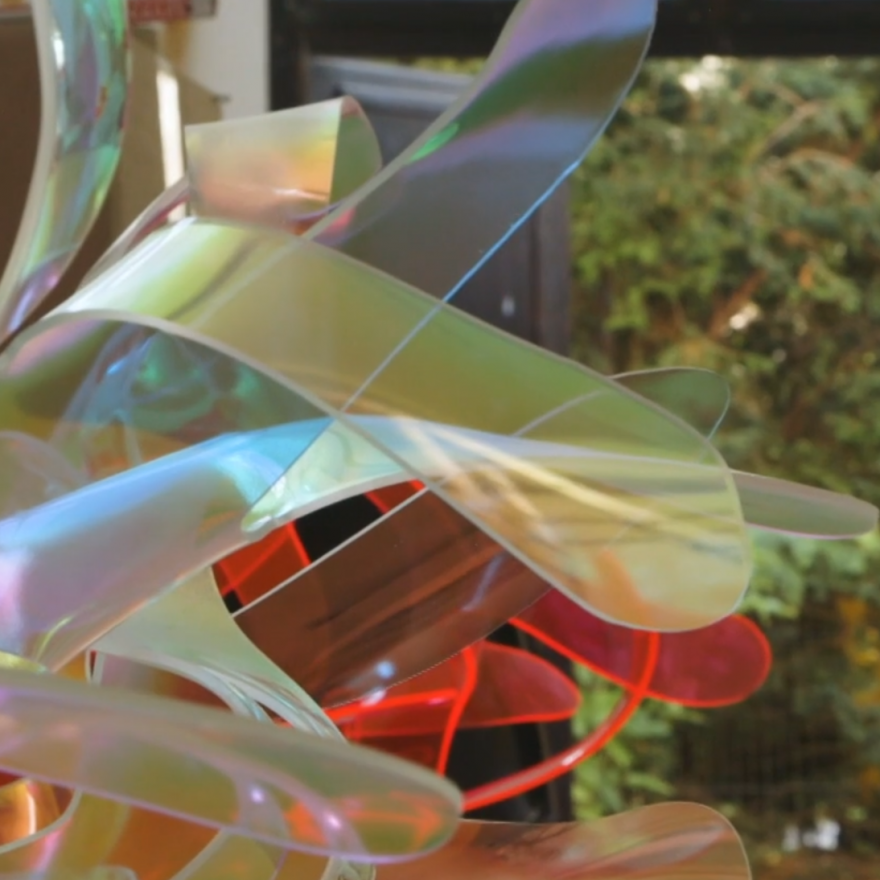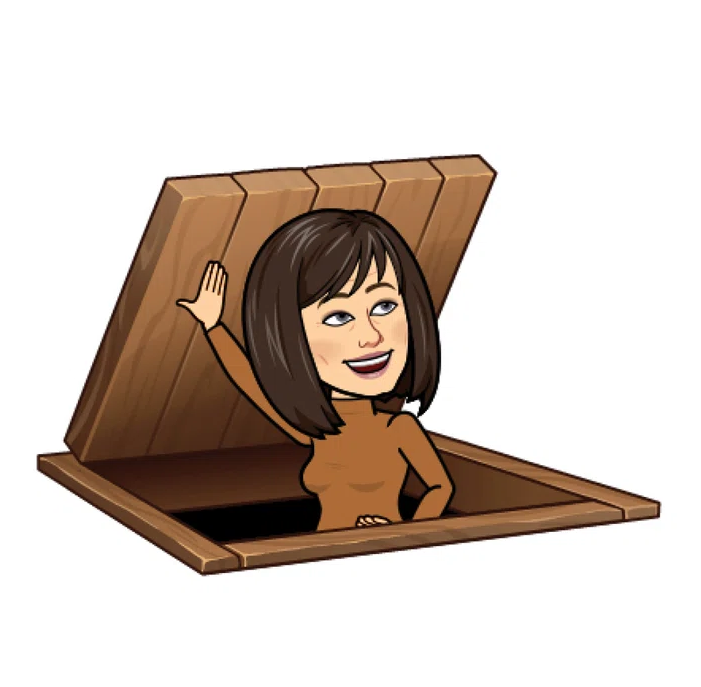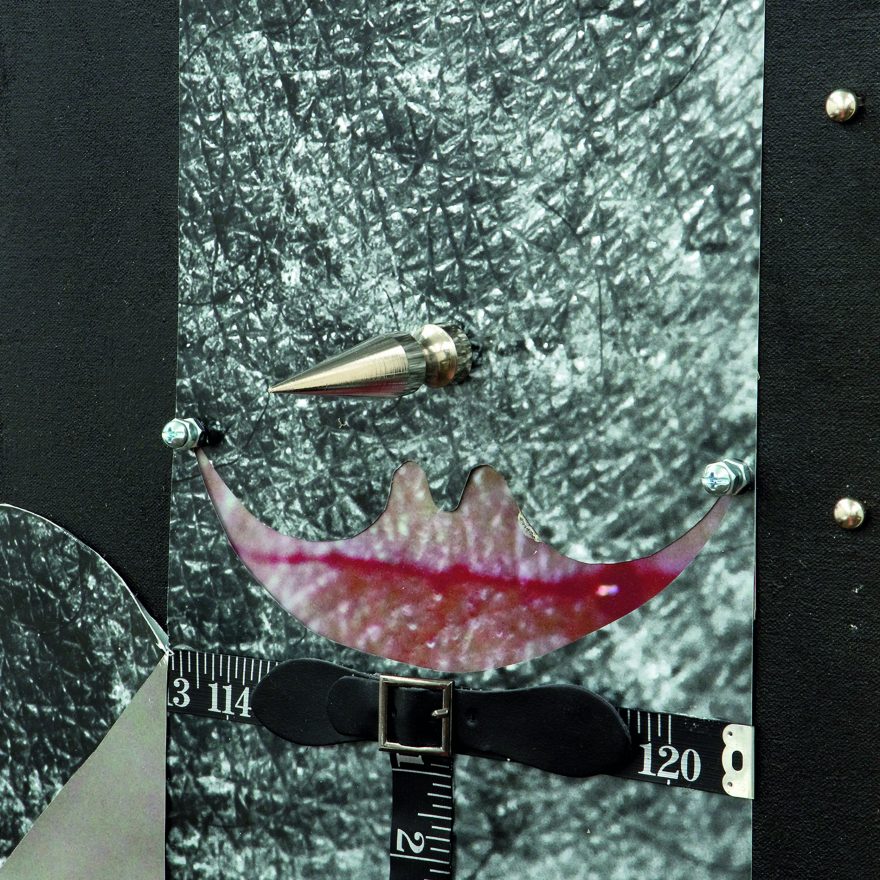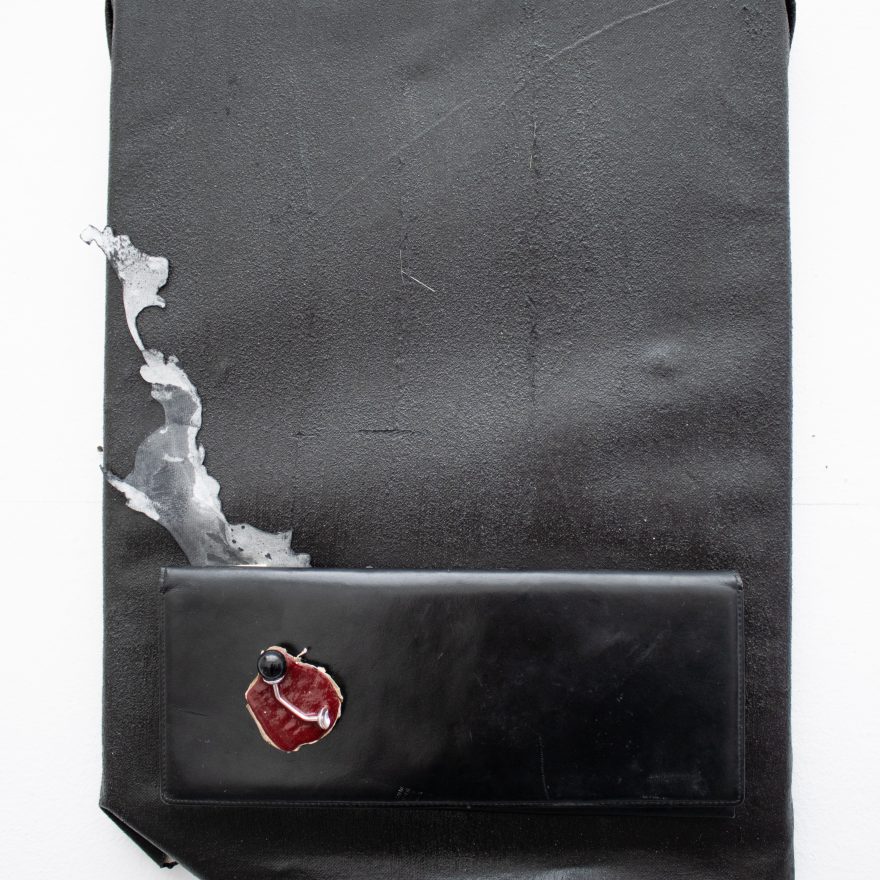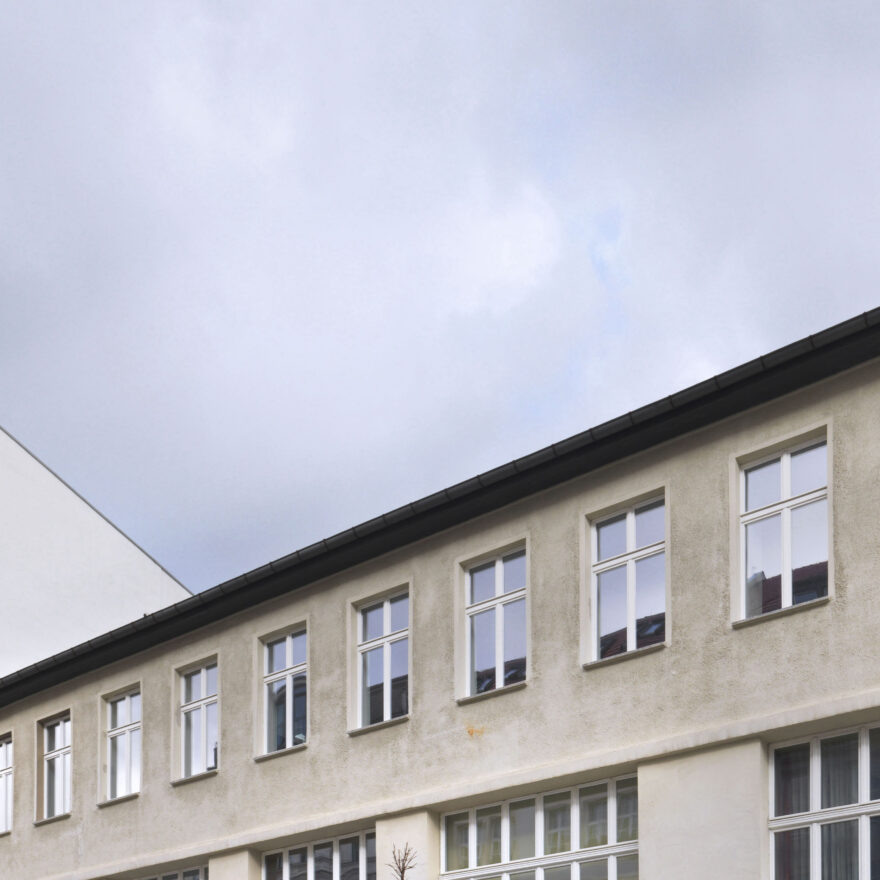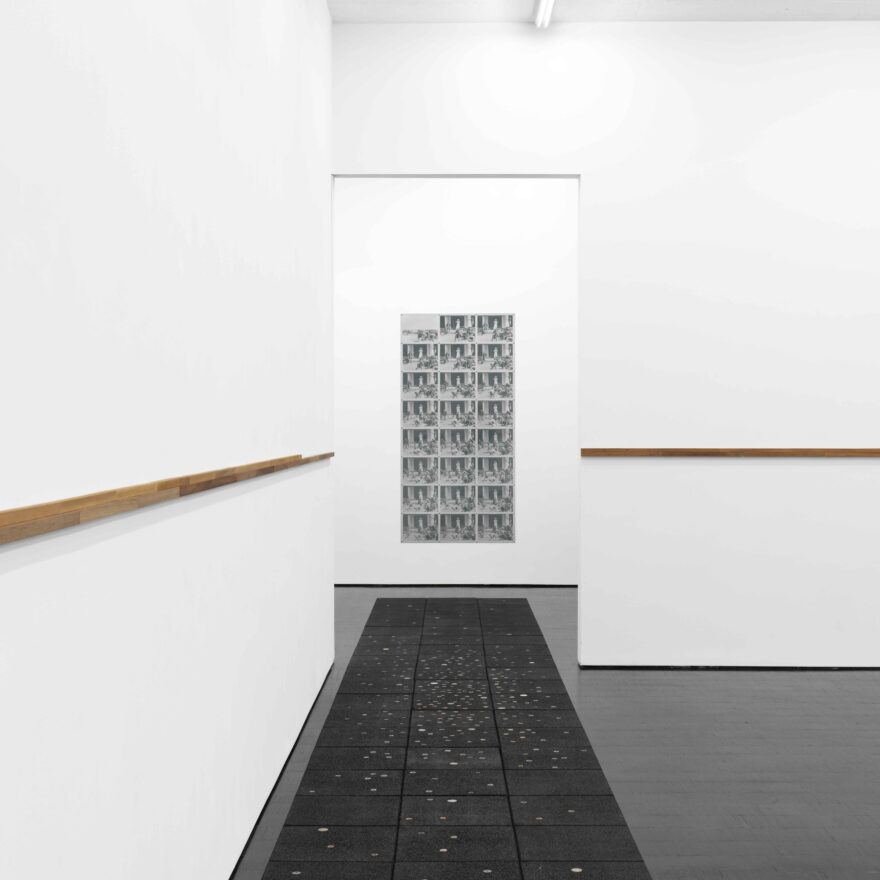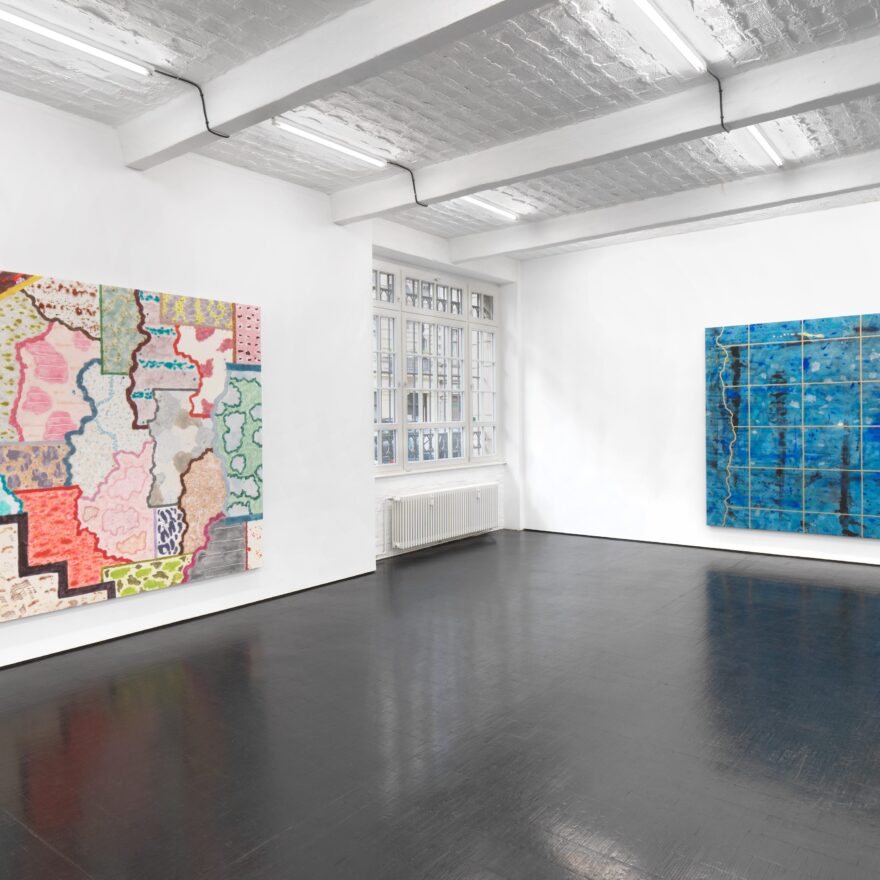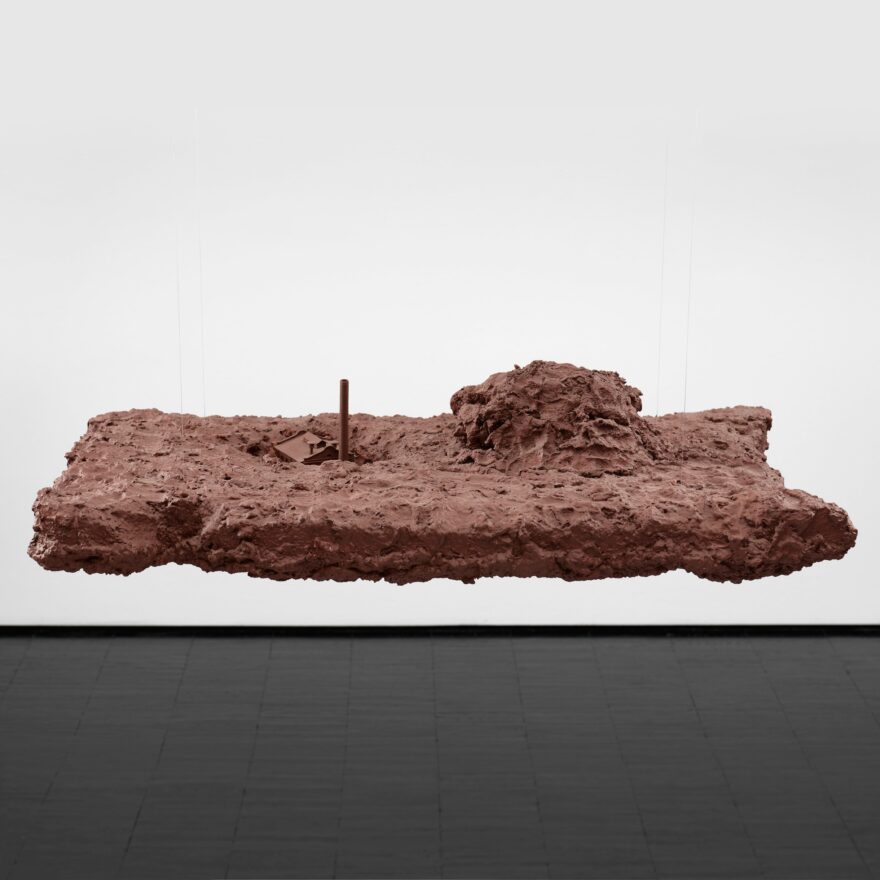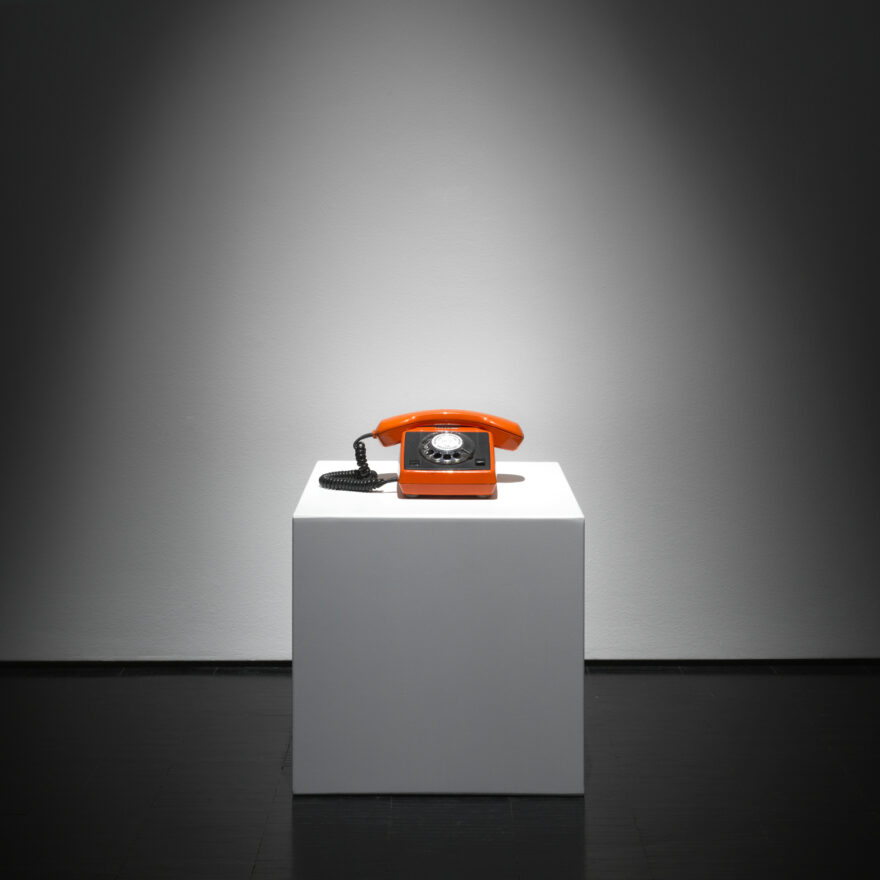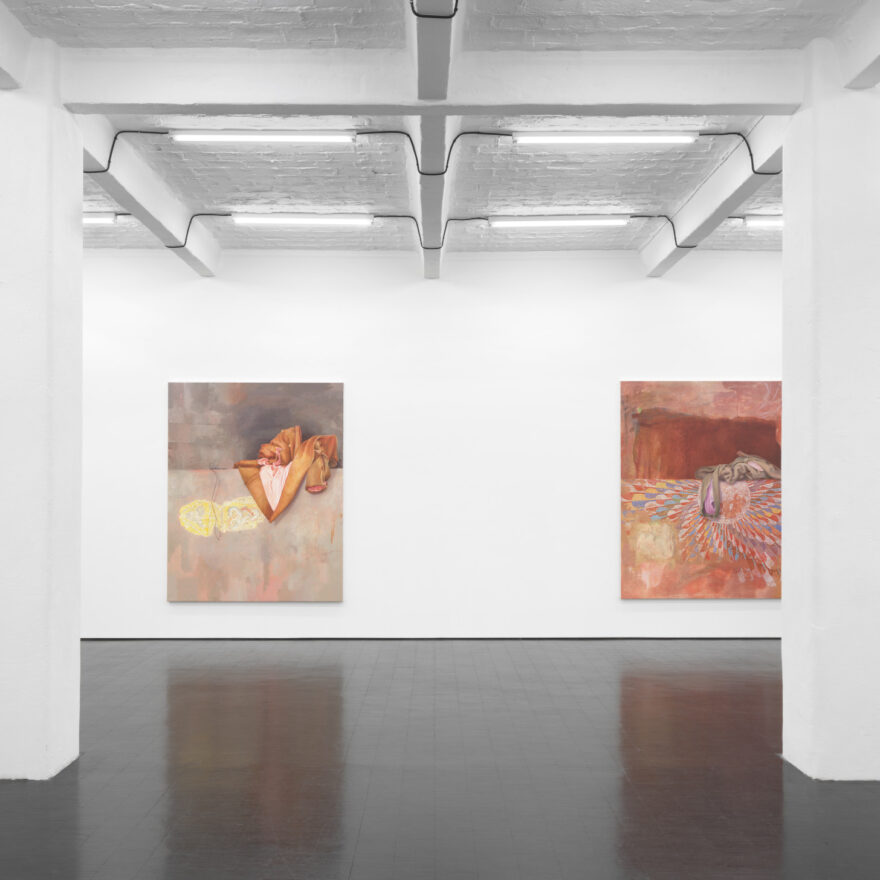Puppies Puppies (Jade Guanaro Kuriki-Olivo)
2 MAY 2025 until 7 JUN 2025
Opening – 2 MAY 2025, 6-9 pm
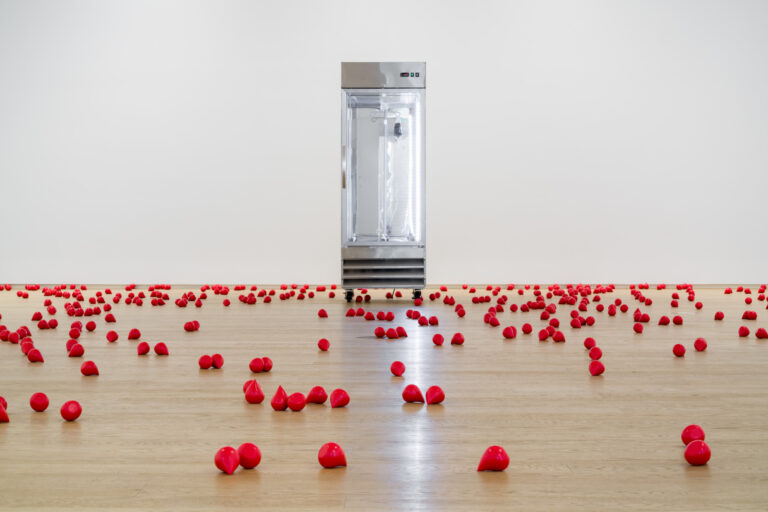
Puppies Puppies (Jade Guanaro Kuriki-Olivo)
Body Fluid (Blood)
Installation view
Remai Modern, Saskatoon, Canada
September 21 – November 17, 2019
Courtesy of the artist and Trautwein Herleth, Berlin
Trautwein Herleth presents a solo exhibition of Puppies Puppies (Jade Guanaro Kuriki-Olivo) for Gallery Weekend 2025. Introducing a new body of work, Kuriki-Olivo continues her engagement with art history and everyday objects, inflecting them with personal, political and social commentary through juxtaposition, combination and careful staging. In her latest body of work, Kuriki-Olivo references Minimalism, colour field painting, Pop Art and the location-based social networking app Grindr – enacting a conversation that yields unexpected symmetries, ironies, biographical coincidences and, ultimately, something revealing about both the artist and the world she inhabits.
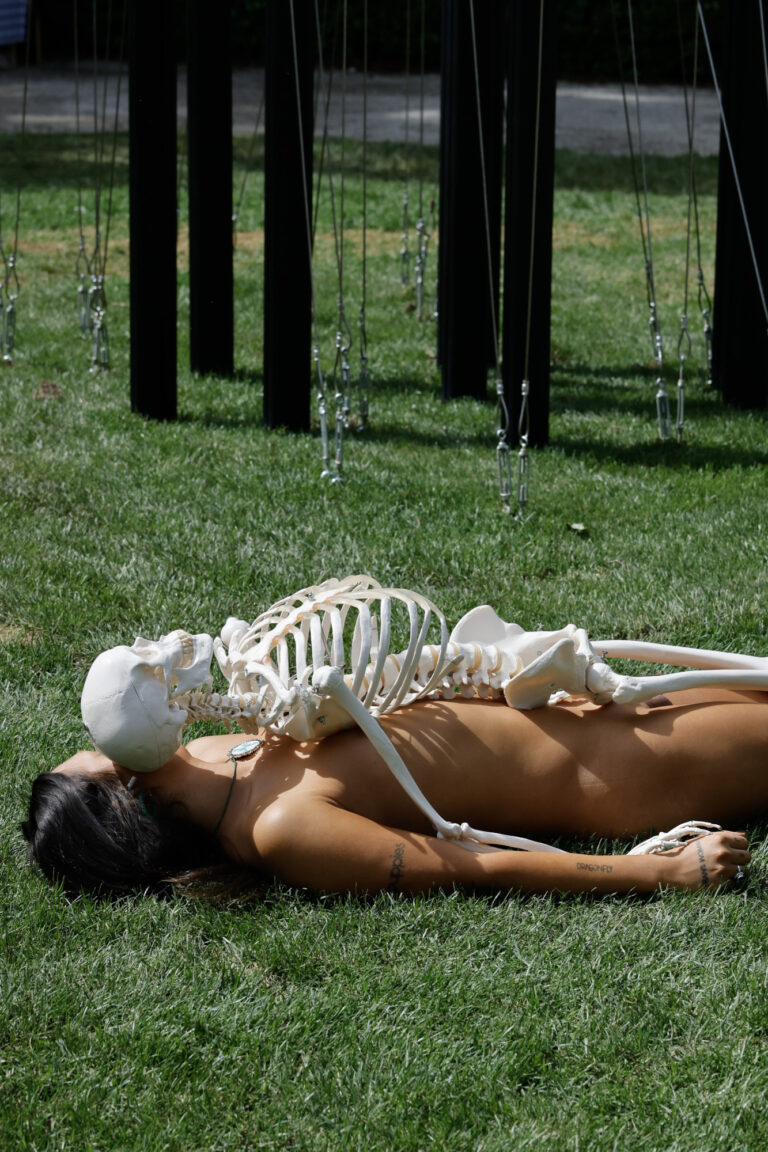
Puppies Puppies (Jade Guanaro Kuriki-Olivo)
The Hommage to Ana Mendieta (“On Giving Life”) and Marina Abramovic (“Nude with skeleton”) Transitions into Daily Make-up Application, 2024
Performance 60th International Art Exhibition – La Biennale di Venezia, Stranieri Ovunque – Foreigners Everywhere, Venice, Italy
April 20 – November 24, 2024
Courtesy La Biennale di Venezia
Photo by Jacopo Salvi
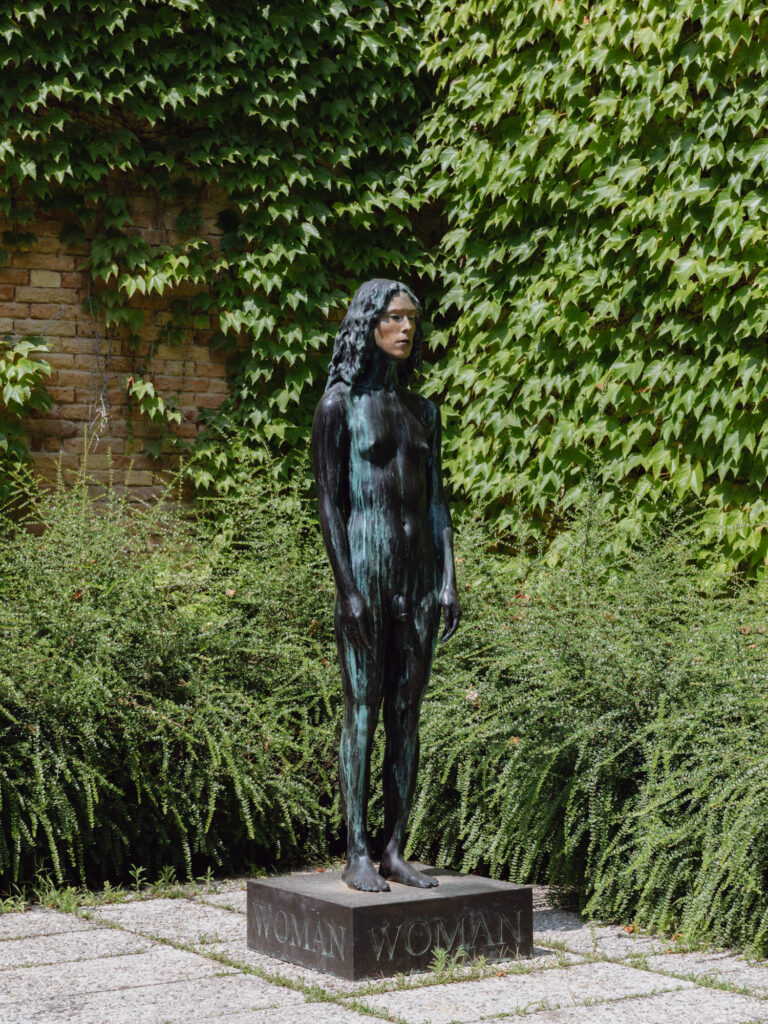
Puppies Puppies (Jade Guanaro Kuriki-Olivo) A sculpture for Trans Women. A sculpture for the Non-Binary Femmes A sculpture for Two- Spirit People. I am a woman. I don’t care what you think. (Transphobia is everywhere and everyone is susceptible to enacting it at any moment) (Unlearn the transphobia brewing within) I am a Trans Woman. I am a Two-Spirit Person. I am a Woman. This is for my sisters and siblings everywhere. History erased many of us but we are still here. I will fight for our rights until the day I die. Exile me and I’ll keep fighting, 2022
Bronze cast on engraved brass base 190 × 60 × 60 cm
60th International Art Exhibition – La Biennale di Venezia, Stranieri Ovunque – Foreigners Everywhere, Venice, Italy
April 20 – November 24, 2024
Courtesy La Biennale di Venezia
Photo by Matteo de Mayda
“[…] my mother’s mother was Toyoko • her family migrated from Hiroshima a long time ago and she lived in Tokyo • while giving birth to my mother in Japan and soon after migrating to the United States • when I see gingko trees bloom I think about their utter resilience • the explosions of bright yellow • the lush whispers of the green fans • Hiroshima was the first military target of a nuclear weapon in human history • this occurred on August 6, 1945 at 8:15 a.m., when the United States Army Air Forces dropped the atomic bomb “Little Boy” on the city • most of Hiroshima was destroyed, and by the end of the year be- tween 90,000 and 166,000 people had died as a result of the blast and its effects • I think about the brain tumors I had and wonder about the effects of the blast on the DNA of a victim’s offspring • the thing about gingko trees is that their roots run incredibly deep so deep they were one of the few forms of the life that survived the atomic blast • when I see one • my breathing changes • I look at it in awe of nature • emerging from the concrete • I think to myself may I be resilient • like you”
– Puppies Puppies (Jade Guanaro Kuriki-Olivo), Jade Introduction, in: Puppies Puppies (Jade Guanaro Kuriki-Olivo), Co-Published by moCa Cleveland, Remai Modern, Kunsthaus Glarus, Cleveland, Glarus 2024, p. 14.
Until 2018, Kuriki-Olivo’s work was created anonymously – the name Puppies Puppies concealed any biographical information about the artist. Using proxies, avatars, ready-mades and props in installations and performances, the early Puppies Puppies works explored ideas of intimacy, desire, fear and exploitation.

